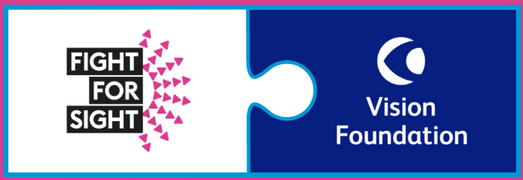Global Accessibility Awareness Day (GAAD) is the annual awareness day focusing on digital access and inclusion for disabled people around the world. It takes place on the third Thursday of May each year.
Everyone deserves a first-rate digital experience on the web but not everyone gets one. GAAD aims to get everyone talking, thinking and learning about digital access and inclusion to improve accessibility for everyone.
Digital accessibility in the workplace
Since last year’s GAAD, we’ve been busy working on our #SeeMySkills campaign. See My Skills sets out a roadmap to ensure that everyone, sighted or blind, has the chance to enjoy the independence, purpose and meaning that employment can bring. We identify the barriers, and how to knock them down.
Will you join us in breaking the barriers to employment for blind and partially sighted people? Here are some steps you can take to make your workplace’s digital systems accessible to visually impaired users. You can share this with your employer, colleagues, friends and family to widen the impact of accessible technology in the workplace.
1) Explore assistive technology features for employees with sight loss
From screen readers to braille embossers, there is a huge range of assistive technology products available for blind and partially sighted people. Here are some of the most common ones you can offer to your team to make their role accessible:
-
Video magnifiers
Sometimes known as CCTVs, video magnifiers use a camera and a screen to magnify things electronically. They are mostly used for reading and writing, but can be applied to any task where magnification would help.
-
Screen readers
This technology supports blind and partially sighted people to use a computer by reading out loud what’s on the screen. Users can adapt them to their needs, for example by decreasing the speed of speech or changing the language. Screen readers allow people to navigate through websites and applications via the speech output. Some can also be used with a braille display.
-
Braille displays
Some blind people use a braille display to access information on their computer screen. These can be used in addition to speech.
-
Reading aids
By using a scanner with optical character recognition (OCR) technology, people with sight loss can convert printed documents into electronic text that can then be read by synthetic speech technology.
-
Braille embossers
If a blind person who also reads braille requires hard copy information (for example, to deliver a presentation, or to refer to at a meeting) this can be produced using a braille embosser and transcription software.
-
Smart phones
Accessibility features are built in to Apple and Android devices, meaning that they are accessible to blind and partially sighted people straight out of the box. Apple products such as the iPhone use VoiceOver, and Android devices use TalkBack. These screen readers work with thousands of apps. They can enable people to text, call, scroll through social media, manage money, do online shopping and respond to important work emails, even if they have no useful vision.
-
Assistant apps
Assistant apps are used to perform everyday tasks with an enhanced degree of independence. They can allow blind and partially sighted people to read printed materials like letters, magazines and menus, recognise currency, find out the colour of an item, identify products using a bar code reader, find out what is around them and hear descriptions of what a scene looks like. They also help to make travelling from one place to another easier using GPS to provide directions, as well as information on landmarks and roads. New assistant apps are being developed all the time and solutions are being created to make many tasks easier.
2) Utilise the Access To Work scheme
Funding is available through the government’s Access to Work scheme for assistive technology products that a blind or partially sighted person needs to do their job. Applying for a grant involves workplace and work-based assessments to confirm what each person needs.
By supporting blind and partially sighted employees, Access to Work can help your organisation to:
- Hire blind and partially sighted people with the
skills you need. - Retain an employee who develops a sight
problem, keeping their valuable skills and saving
both time and money recruiting a replacement. - Show that you value and will support your
employees by having good employment policies
and practices.
3) Listen to your blind and partially sighted colleagues and use lived experience of sight loss to inform your decisions about accessibility

The suggestions in this blog are designed to support people with sight loss at work. But it’s important to remember that not everyone’s needs will be the same. When considering adjustments, speak to any blind or partially sighted people on your team to find out what they think will help them. For new employees, arrange a tour of the workplace. Allow time to talk about their needs and any extra adjustments that may be required.
Spotlight on Sight Loss: Accessibility in the Workplace
Book one of our live awareness sessions where we tackle all the taboos of sight loss while giving you and your colleagues practical information about sight loss employment.
Each session covers:
- The challenges of sight loss employment.
- Common misconceptions of sight loss.
- Practical information about Access To Work and assistive technology.
- Communication and guiding tips.
Email Louise Franklin, Head of Corporate Partnerships on lfranklin@visionfoundation.org.uk, to book a session for your company.
Downloadable PDF resources on workplace accessibility:
What employers need to know about Access to Work (PDF)
How assistive technology can help blind and partially sighted people at work (PDF)
How to make your workplace accessible for blind and partially sighted people (PDF)
Find our full resources pack, including accessible versions of the above documents here.




